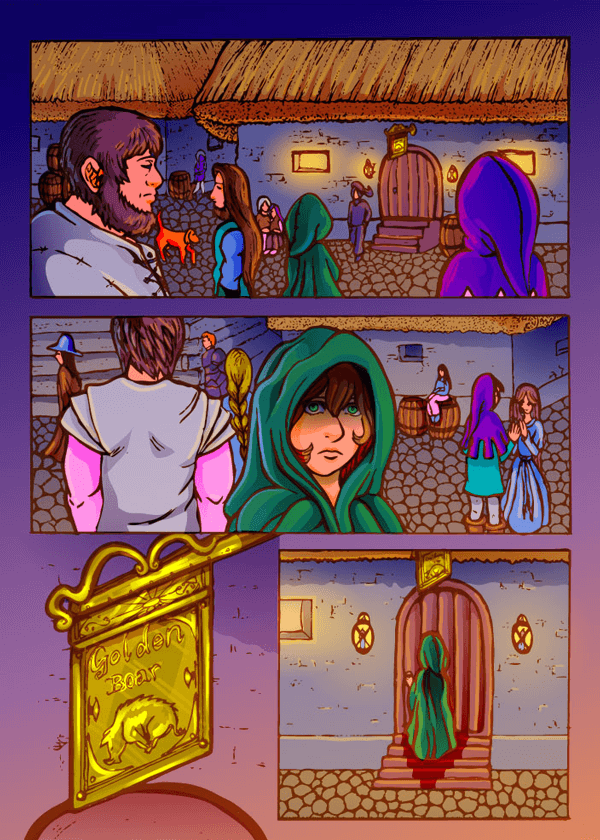1. Prepare the Line Art
Step 1
I have a previously made comic page which is inked traditionally. To start I make a new document in Adobe Illustrator and import the artwork by going to File > Place…
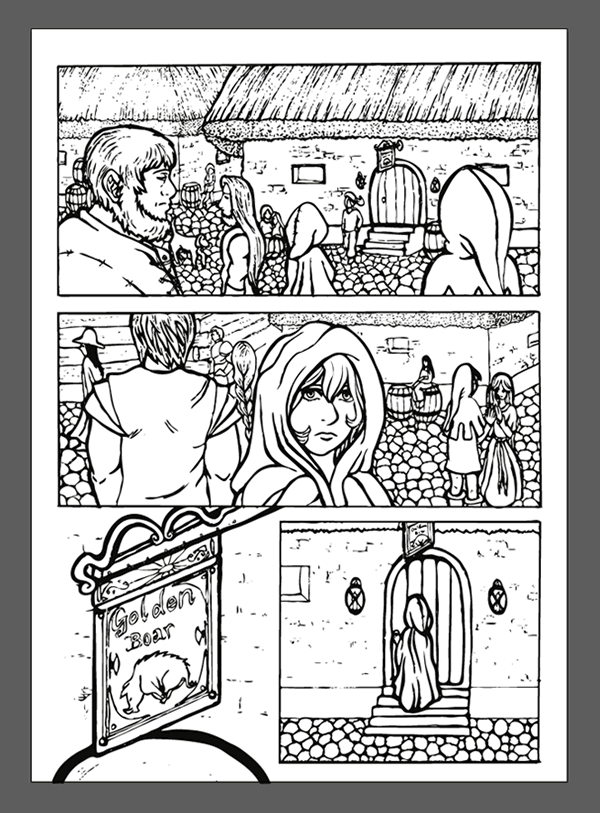
Step 2
Since the file I imported is a png, I need to turn the line art into paths in Illustrator. First I will need to trace the artwork by pressing the Image Trace button in the top menu, which appears when I have the image selected.

Next I press the Expand button in the same top menu. The image has now turned into editable paths.

When tracing an image, the results depend a lot on the resolution. In the below example, the top image is a result of tracing with an image resolution of 72 dpi, while the one below has a resolution of 300 dpi. The more detailed you want it, the higher the resolution.
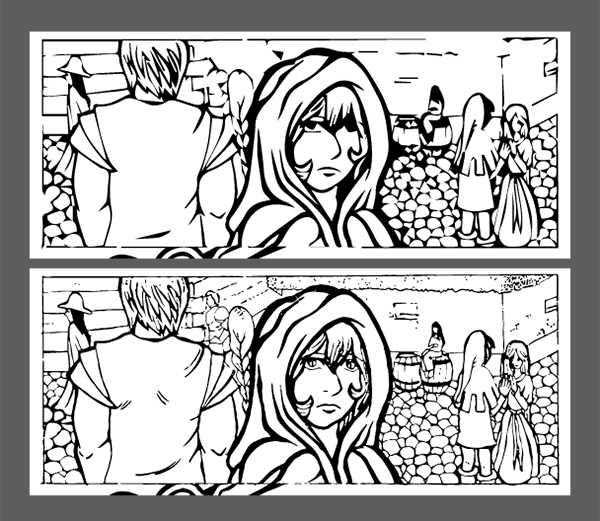
Step 3
I name the layer “LineArt” and select everything on it by pressing the round button to the right of it in the Layers panel.

Instead of the pure black, I choose a softer brown color for the line art, and then set the mode to Multiply in the Transparency panel.
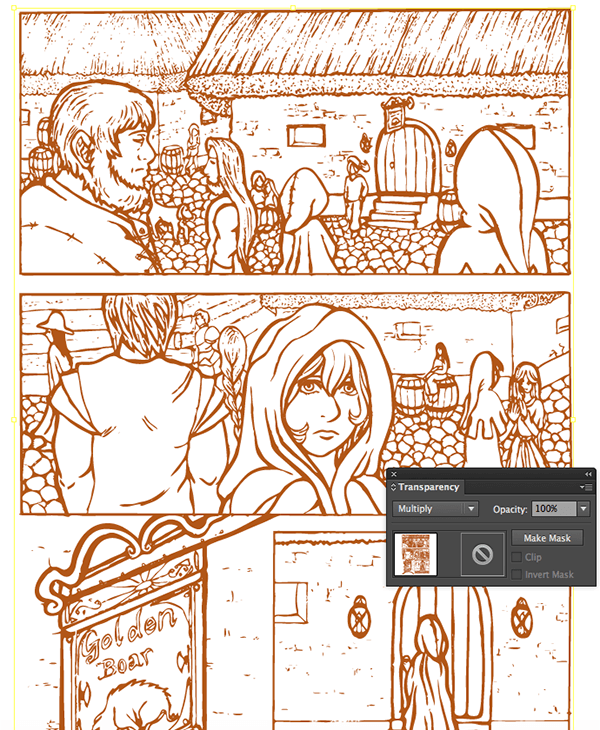
2. Set the Flat Colors
Step 1
From here I pick out a bunch of eye-catching colors. This makes it easier to notice when I’ve missed a spot.
I turn each hue into a swatch and make sure to check the Global box before pressing OK. This is so that when I later adjust the colors, every object with the same color swatch will also change.
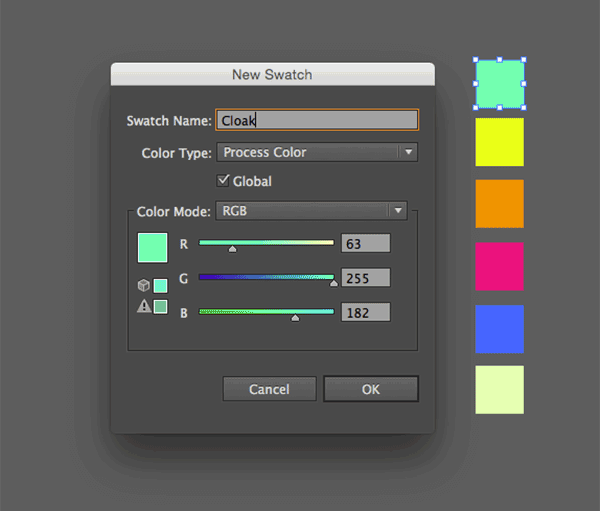
Step 2
I make sure I have the line art paths selected, and then choose the Live Paint Bucket from the side menu (shortcut is K on the keyboard).
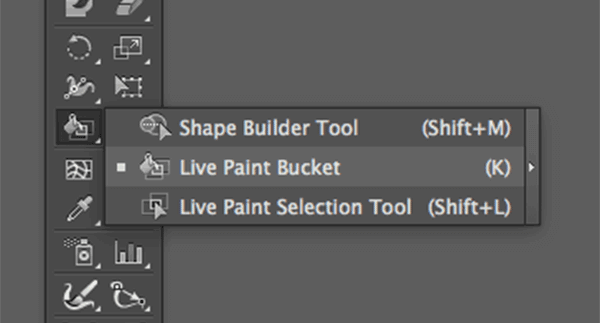
Now I simply click to fill in all empty fields with different colors.
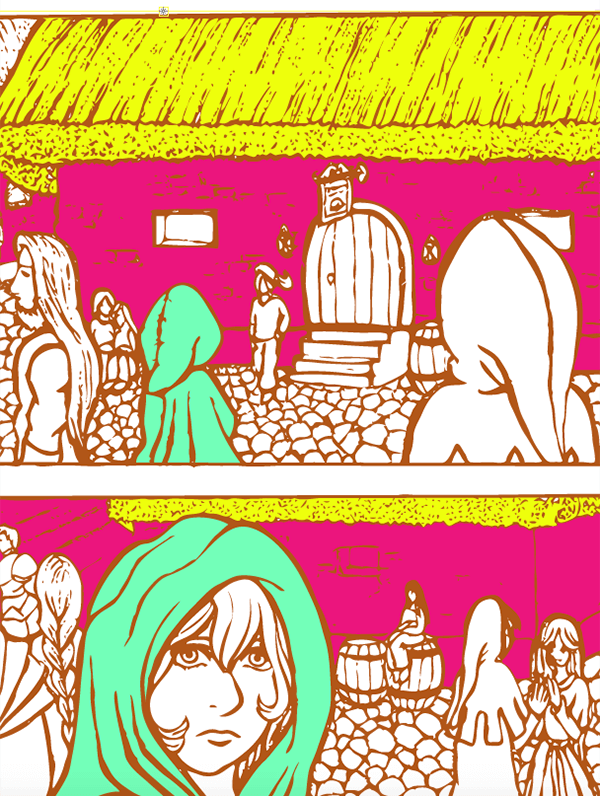
Step 3
In some instances, as with the detailed cobblestone, it might be easier to use the Pen Tool instead.
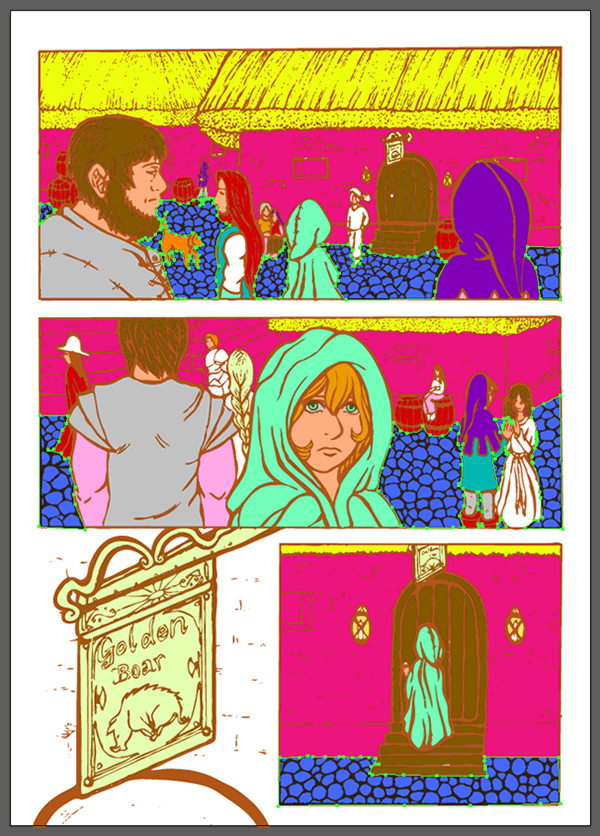
3. Pick the Correct Colors
Step 1
To help me pick suitable colors, I start setting the atmosphere with a gradient background. The comic will take place at night with the center character approaching the warm light from the tavern. I illustrate this by choosing a dark purple color, which becomes more orange the closer it gets to the tavern.
I name this layer Background and select Multiply from the Transparency panel.
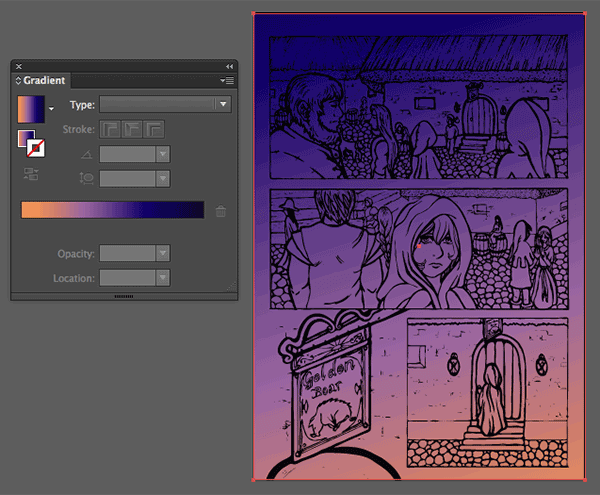
Step 2
I adjust the colors by double-clicking each global process color and experiment a bit with the HSB sliders in the Color Mode.
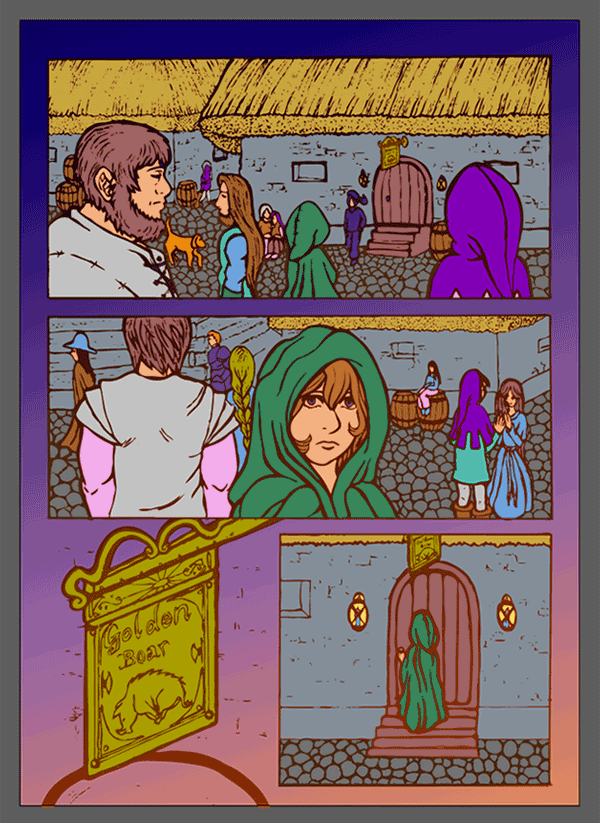
Step 3
Lastly, I drag the Background layer on top of the others. Since the transparency is set to Multiply, the gradient will influence the colors a bit.
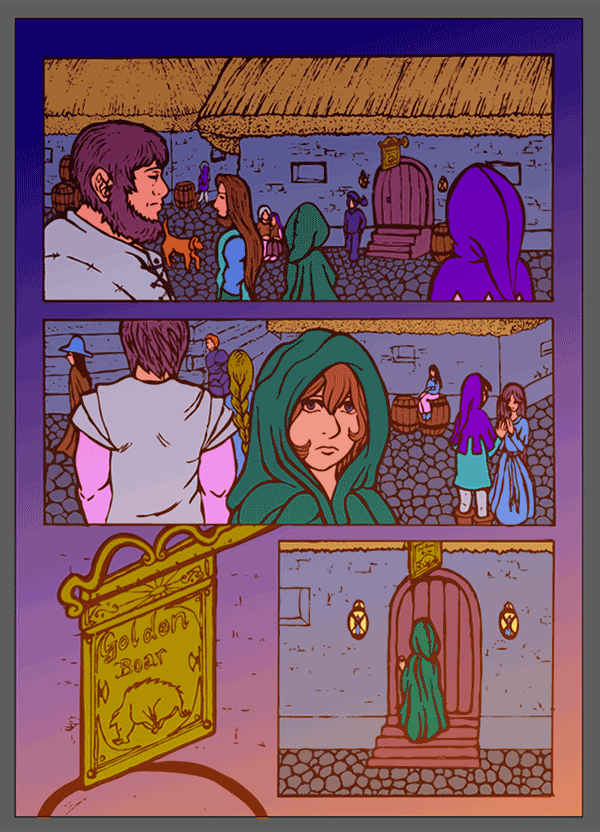
4. Add the Shadows
Step 1
To create the shadows, I start by making a new layer which I name Shadows. I set the transparency of the layer to Multiply, just like with the gradient background.
Using the same color swatch as the object I want to shade, I start hand drawing the shapes of the shadows with the Pencil Tool (N). Since this layer is set to Multiply, the color becomes a matching darker version.
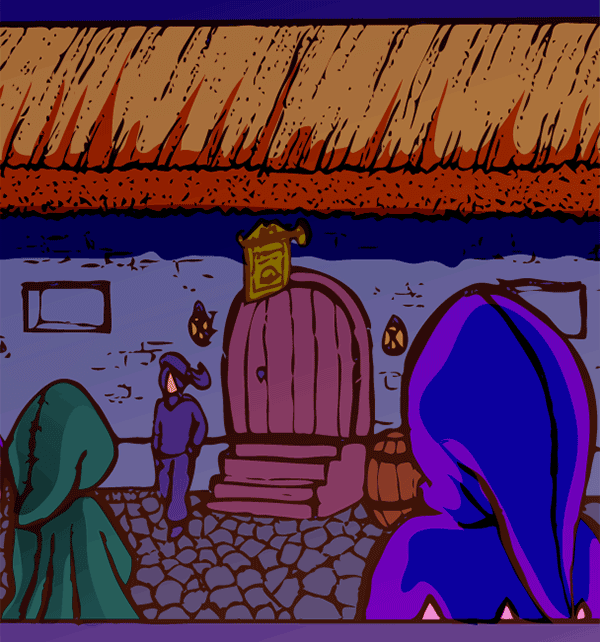
Step 2
When I am done with the shadows of a particular color swatch, I go to the top menu and press the Select All button with Fill Color selected.
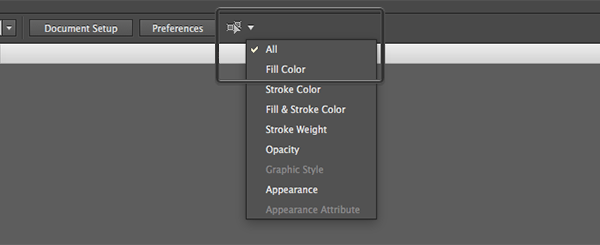
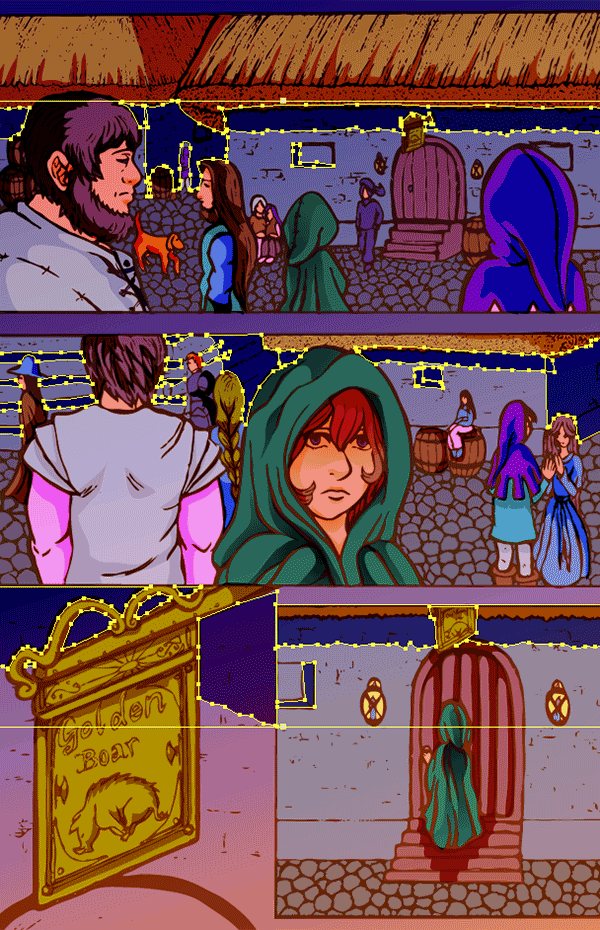
Step 3
Having all objects now selected, I turn the color of the objects into a radial gradient, going from 100% color to 0%. This makes the shadows softer.
Repeat this for each shadow color and adjust the gradients as you see fit.
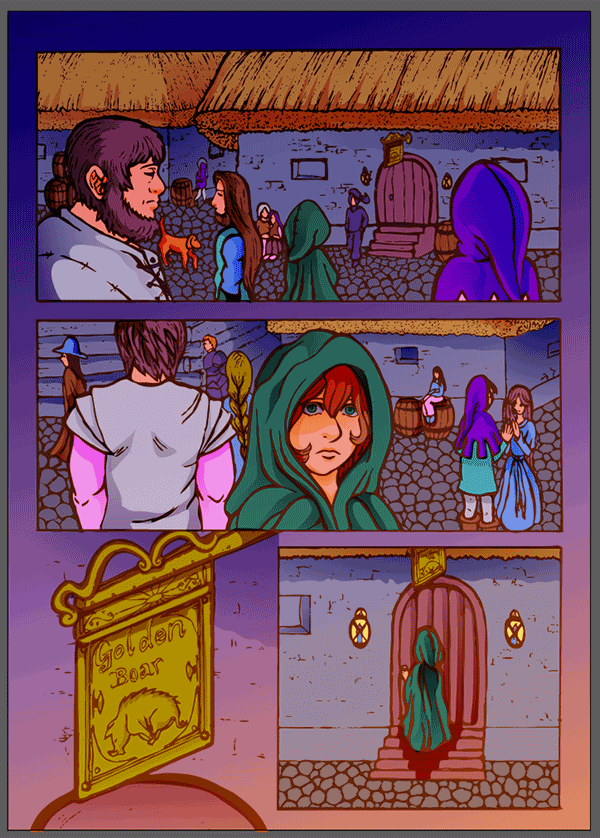
5. Let There Be Light
Step 1
To make the lights in the scene, I make a new layer with transparency set to Soft Light.
For the lanterns I make a radial gradient with a warm yellow light. I repeat this light on the ground too, but a bit more faded.

Step 2
You can pull out some texture for objects with some highlighted details with the Pen Tool.
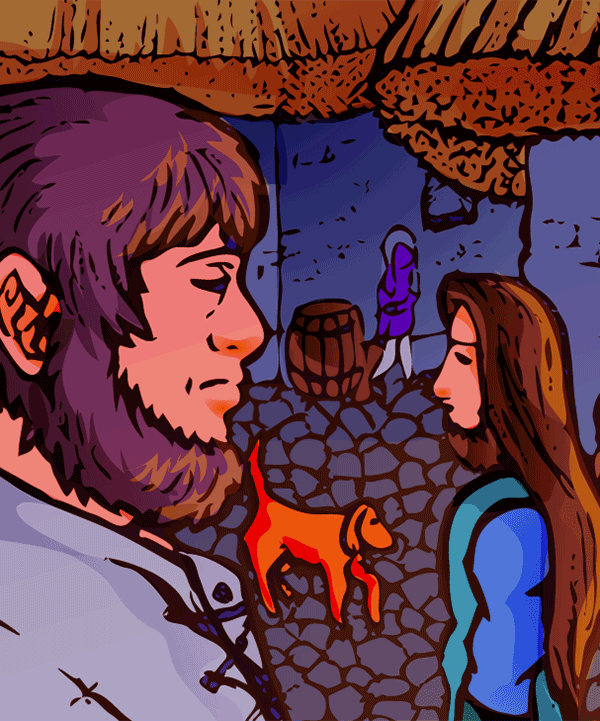
Step 3
With the Blob Brush I add some highlights to the roof.
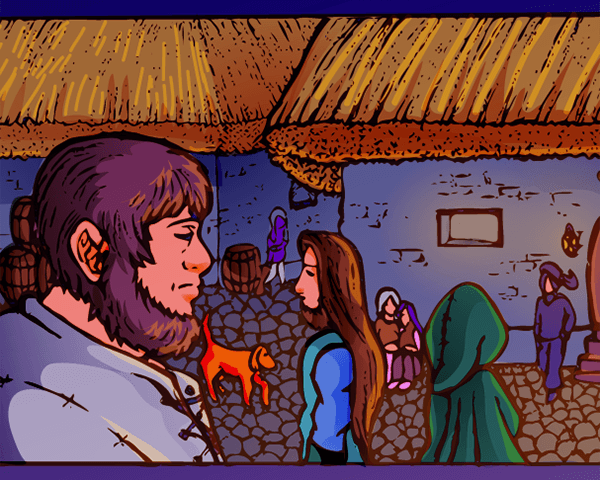
I also add some rim light to the characters closest to the light source.
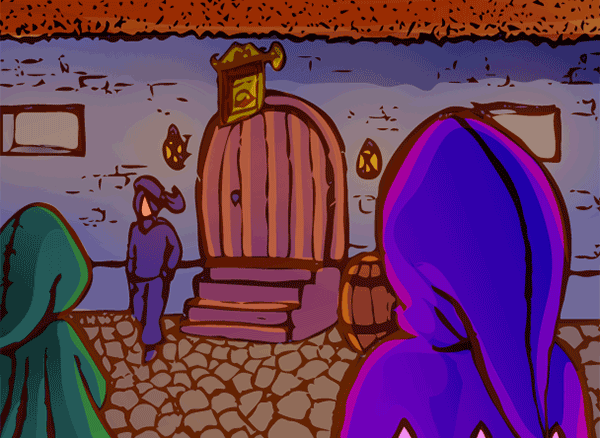
Step 4
In the middle panel, the character is approaching the light source, so I add some wider fields of highlights to her cloak and hair using the Pen Tool.
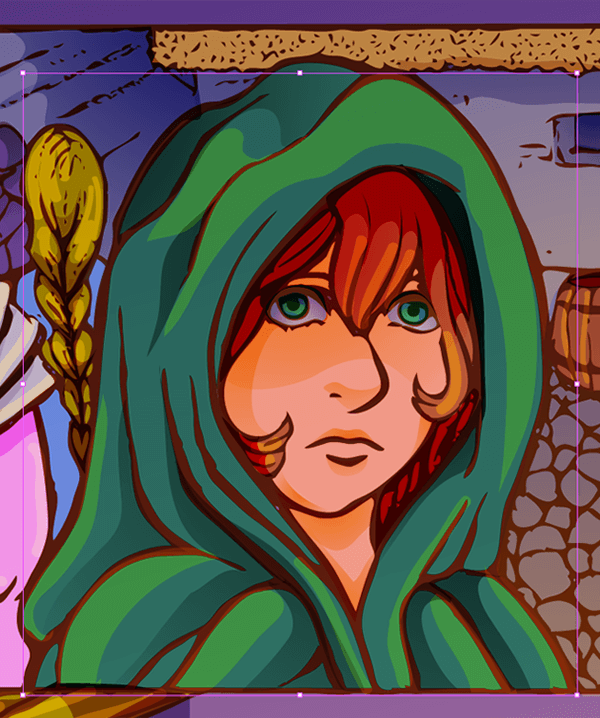
6. That Little Extra Kick
Now that the whole page is starting to come along, I take some extra time to look for little things that can be improved.
Step 1
Going back to the Shadows layer, I make a darker shadow on her face by adding a blue radial gradient, contrasting with the yellow light.
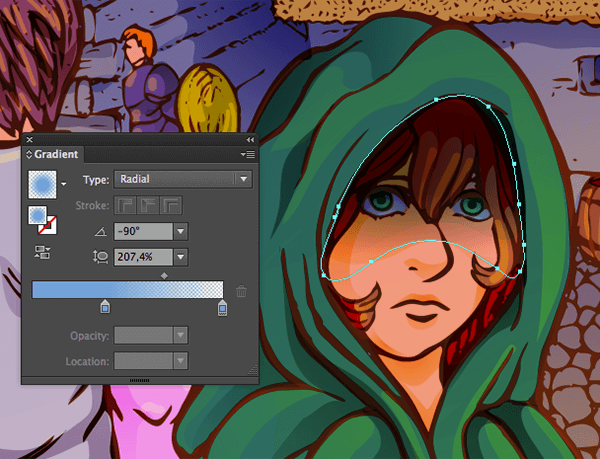
Step 2
With the same gradient color I go to the Highlights layer, where I add highlights coming from a second light source, like moonlight.
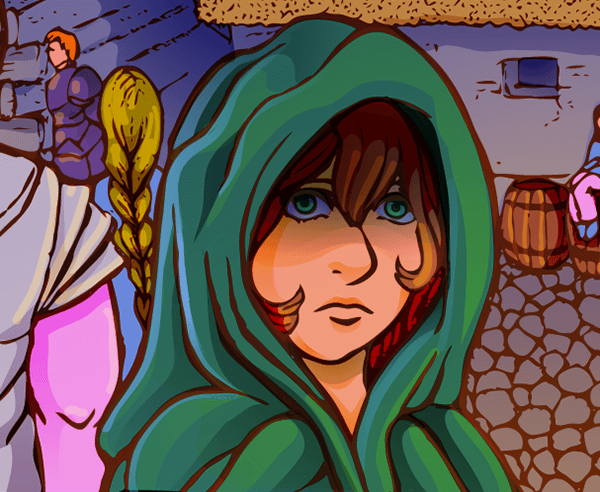
I add the same kind of light in some other places, but keep the majority on the main character in the cloak.
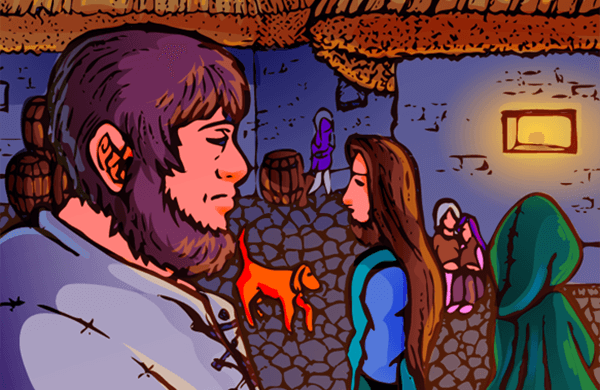
Step 3
I want to add some extra shininess to the golden sign. Making a new layer with the Transparency set to Color Dodge, I select a light yellow color and use the Blob Brush to go over where I want some more shine.
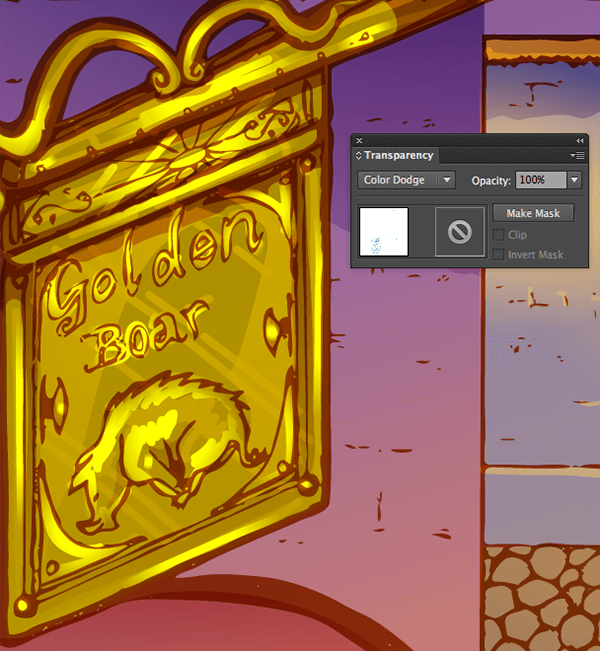
On the same layer I add some of that shine to the irises of the character’s eyes as well.
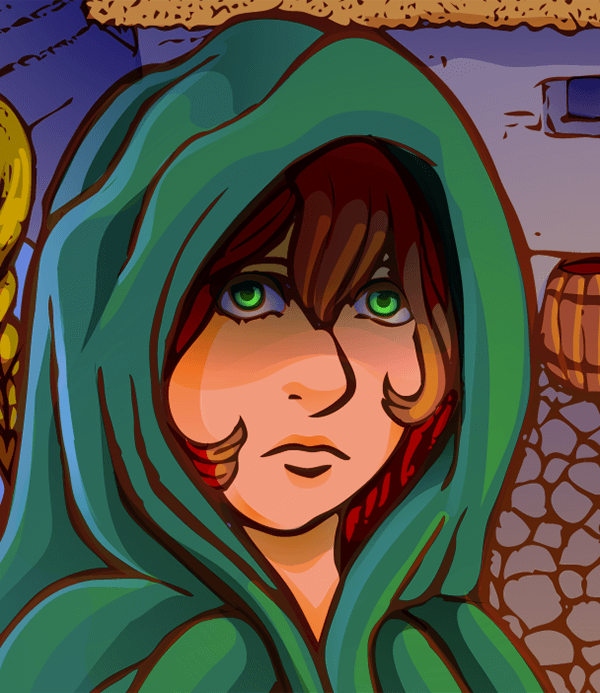
Awesome Work, You’re Now Done!
In this tutorial we’ve shown how to turn a traditionally inked comic page into colored vector. With Live Paint we can quickly add the flat colors, and using global process colors makes it easy to adjust the colors you want.
Then by using gradients, the Pen Tool, the Blob Brush and different Transparency modes, we can create an appropriate atmosphere and a more 3D feeling for our comic.
Coloring is a process it is easy to get lost in, either by not feeling sure on how to go about it, or being so into it that you lose track of the time. Having a basic strategy makes it easier to get started, and then you can hopefully get lost in the good kind of way!
